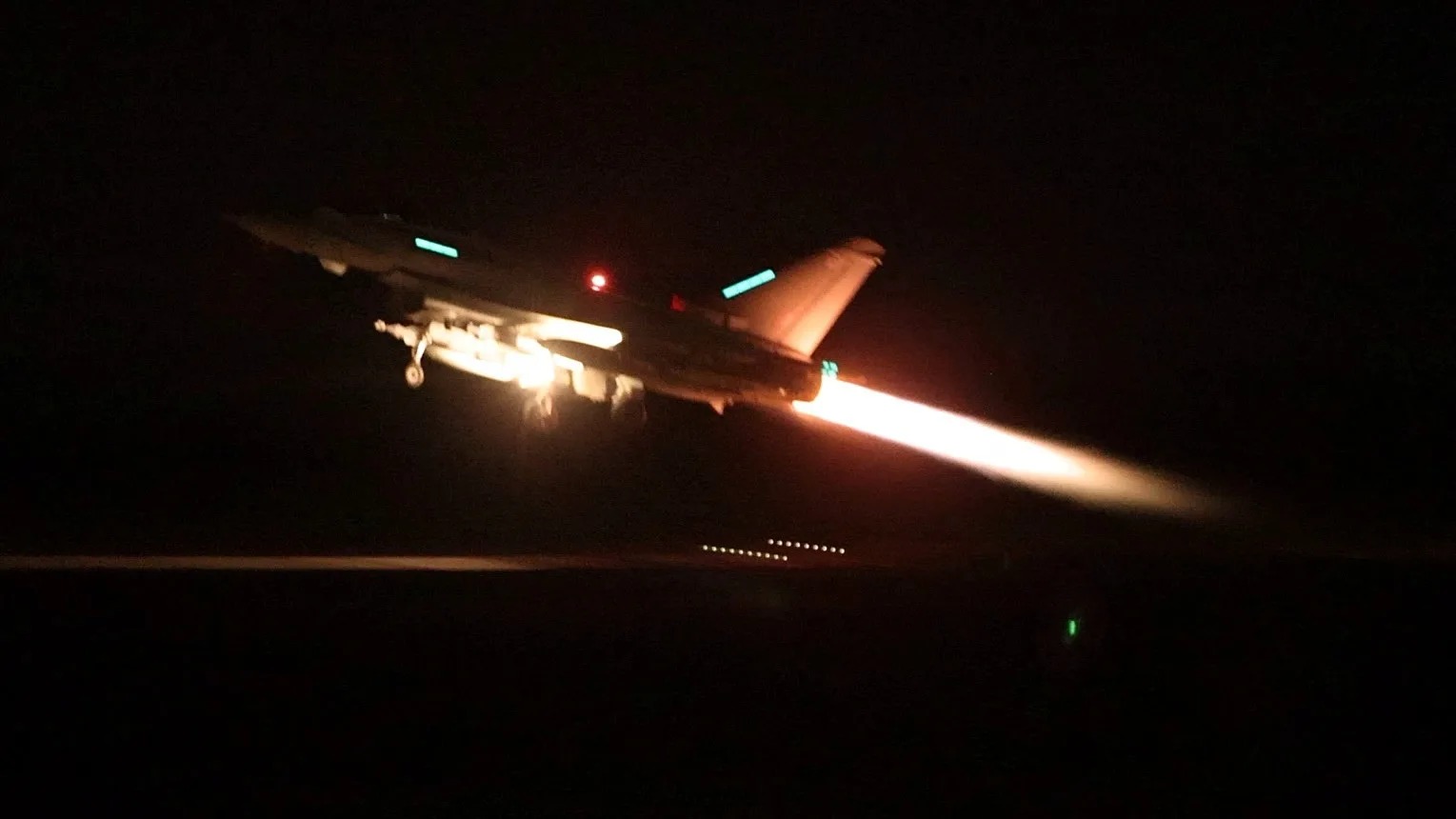In a significant escalation of military actions, the United States and Great Britain have carried out coordinated airstrikes against targets in Yemen, targeting the Iranian-backed Houthi rebels. This joint operation was in response to the Houthis’ aggressive tactics against commercial shipping operations in the strategic Red Sea corridor.
The Pentagon revealed that the operation successfully targeted a comprehensive list of military assets belonging to the Houthi forces, including 18 targets across 8 locations.
These included underground armories, missile storage sites, drone facilities capable of launching one-way attacks, air defense mechanisms, radar installations, and even a helicopter, all of which have been instrumental in the Houthis’ sustained assault on maritime channels.

Strikes Against Houthi in Yemen (Credits: Euronews.com)
This latest military intervention underscores the ongoing threat posed by the Houthi rebels, who have not only targeted naval but also commercial vessels in the Red Sea, disrupting one of the world’s most vital routes for international trade.
The Red Sea is a critical maritime passage that connects Asia to Europe via the Suez Canal, accounting for approximately 15% of global maritime trade.
The Houthi’s persistent attacks since last fall have led to significant disruptions, with 14 shipping companies opting to abandon this route in favor of the longer and more costly journey around the southern tip of Africa.
Despite previous rounds of airstrikes by the U.S. and U.K. aimed at quelling the Houthi’s maritime aggression, the rebels have escalated their tactics, recently deploying an undersea drone against shipping lanes, marking a new development in their offensive capabilities.
This relentless pursuit of attacking shipping lanes has prompted a stern response from the U.S. military, with Defense Secretary Lloyd Austin emphasizing the United States’ commitment to defending lives and ensuring the free flow of commerce through one of the globe’s most crucial maritime pathways.
The background of the conflict is complex, with the Houthis supporting Palestinian causes in Gaza, but their broader ambitions and motivations remain a subject of analysis.
The strategic significance of the Red Sea and the Suez Canal to global trade cannot be understated, and the continued instability in the region poses a direct challenge to international shipping and, by extension, the global economy.
This latest military response by the United States and Great Britain reflects the international community’s increasing concern over the security of critical maritime routes and the broader implications of the Houthi rebellion in Yemen.























